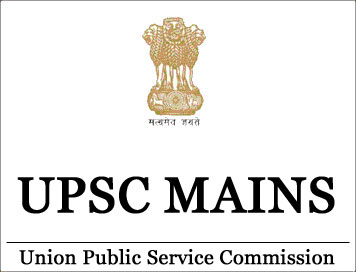(HOT) UPSC Current Affairs 2025 PDF
NEW! The Gist (NOV-2025) | E-BOOKS
(Download) UPSC IAS Mains Optional History (Paper -1) Exam Paper - 2016

(Download) UPSC IAS Mains Optional History (Paper -1) Exam Paper - 2016
- Exam Name: UPSC IAS Mains
- Year: 2016
- Exam Date: 9-12-2016
Section-A
1. Identify the following places marked on the map supplied to you and write a short note of about 30 words on each of them in your Question-cum-Answer Booklet. Locational hints for each of the places marked on the map are given below seriatim: 2.5x20=50 marks
(i) A Mesolithic site
(ii) A Neolithic site
(iii) A Megalithic Chalcolithic site
(iv) A Neolithic site
(v) A Neolithic site
(vi) A Megalithic site
(vii)A site known for Buddhist remains
(viii) A Harappan site
(ix) A Harappan site
(x) A Harappan site
(xi) A Neolithic site
(xii)A Harappan site
(xiv) A capital city
(xiv) A rock-cut cave site
(xv) A late Harappan site
(xvi) An educational centre
(xvii) A terra-cotta art centre
(xviii) A seaport
(xix) A capital city
(xx) A capital city.
INDIA
WITH AFGHANISTAN, BANGLADESH, BHUTAN, NEPAL,
MYANMAR (BURMA), PAKISTAN AND SRI LANKA
2.(a) Delineate and account for the regional characteristics of the Neolithic period in India. 15 marks
(b) Explain why the majority of the known Harappan settlements are located in the semi-arid areas with saline groundwater. 20 marks
(c) In what way was the egalitarian character of the carly Vedic society changed during the later Vedio poriod? 15 marks
3.(a) Examine the relationship among economic growth, urbanization and State formation from c. 7th century BCE to 3rd century BCE. 15 marks
(b) How does the numismatic evidence of the period reflect the political and economic outlook of the Kushanas and the Satavahanas? 15 marks
(c) The changes in the field of art from the Kushana period to early medieval period arc incre reflection of changing outlook." Comment. 20 marks
4.(a) Critically evaluate the theory and practice of land revenue system in ancient India. 20 marks
(b) The copious references to the preservation of Varnashrama system by the kings eulogized in inscriptions are mere reflection of the Smriti tradition." Discuss. 15 marks
(c) How did the temples of South India, as financial institutions, have deep impact on the social institutions of carly mcdicval period? Critically examine. 15 marks
Click Here to Download Full Papers
DOWNLOAD UPSC MAINS HISTORY 11 YEARS SOLVED PAPERS PDF
DOWNLOAD UPSC MAINS HISTORY 10 Years Categorised PAPERS
Study Notes for UPSC MAINS HISTORY Optional
Printed Study Material for IAS PRE cum Mains General Studies
SECTION=B
5.(a) Evaluate the contents of the Tabaqat-i-Nasiri as a source of medieval history. 10 marks
(b) Analyze the significance of the Uttaramerur inscriptions of the Chola King Parantaka I. 10 marks
(c) Evaluate Jonaraja's account of the reign of Zain-ul-Abidin. 10 marks
(d) Comment on the veracity of Alberuni's account of the Indian society. 10 marks
(e) Delineate the development of the Mughal painting during the reign of Jahangir. 10 marks
6.(a) Explain the ingredients of the transitory nature of the early medieval India. 15 marks
(b) What measures were initiated by the Sultans for the consolidation of the Delhi Sultanate? Discuss. 15 marks
(c) Identify the broad contours of the Mughal foreign policy and their impacts on the Mughal empire. 20 marks
7.(a) "The Advaita doctrine of Shankara cut at the very root of Bhaktivada." Do you agree? 15 marks
(b) Do you think that the economic measures introduced by the Sultanate rulers were beneficial to the common people as well? Illustrate with examples. 20 marks
(c) Assess the contribution of Firoz Shah Bahamani and Mahmud Gawan in the field of education. 15 marks
8.(a) Do you think that the agrarian crisis of the 17th century led to the disintegration of the Mughal empire? Discuss. 20 marks
(b) Was it the weakening of the Mughal empire or the rise of regional powers that led to the British conquest of India? Discuss. 15 marks
(c) Is it true that the court intrigues and weak revenue system led to the collapse of the Maratha empire? Comment


